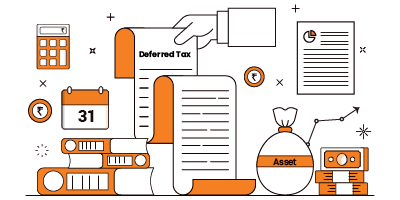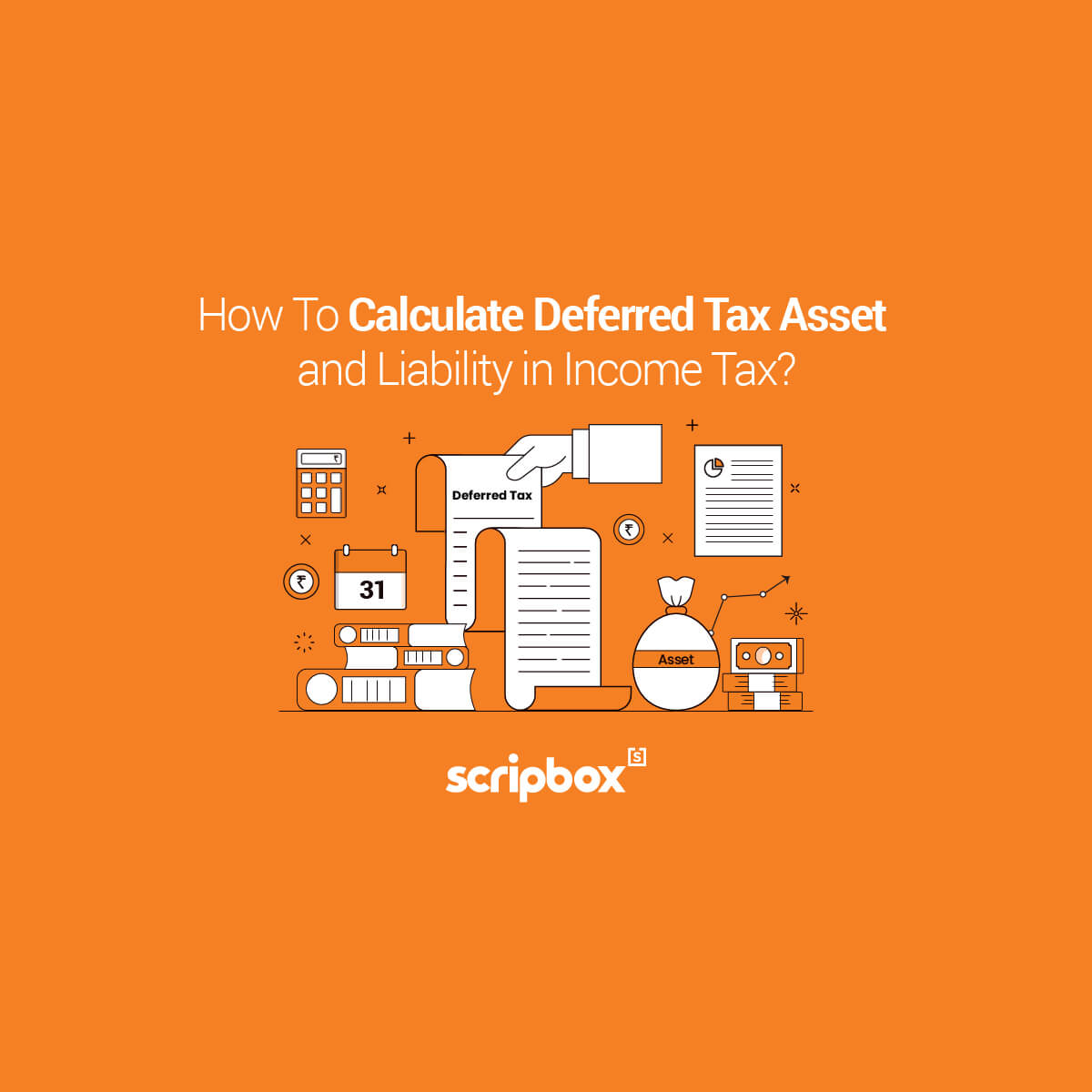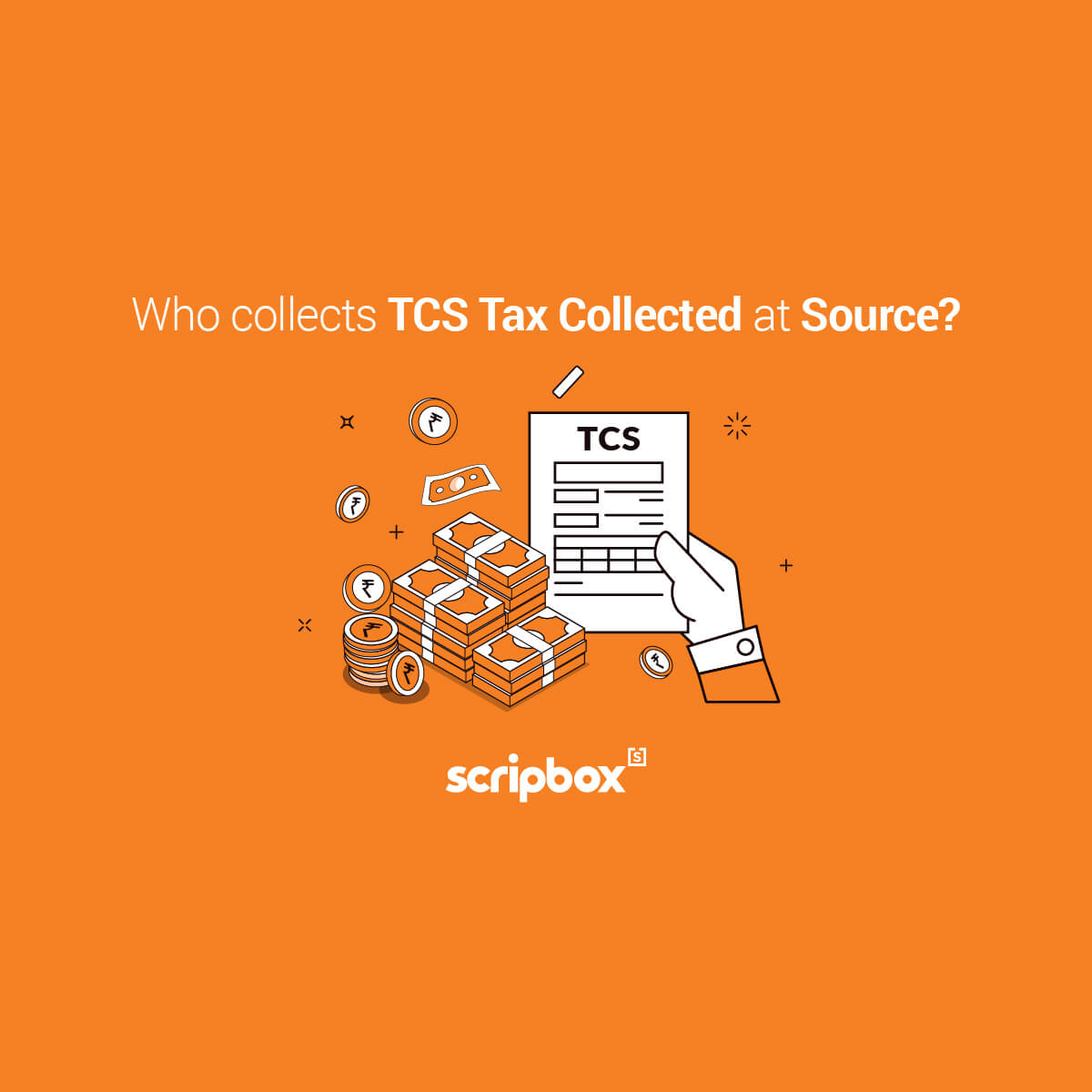Before moving to understand the concept of deferred tax liability, below are a few key points that need to be considered:
- Companies generally prepare two important financial reports for every year, being tax statements and income statements.
- Considering the tax laws and accounting regulations in a country, it is possible that a transaction has a different treatment under both.
- In India, the Income statement is prepared in accordance with the Accounting Standards or IND-AS as applicable to a company. The calculation of tax is made as per the provisions laid down in the income tax act.
Keeping in view the above, a deferred tax is created due to timing differences which lead to tax obligations being accumulated and being due in separate years. In simple terms, where a company has to pay tax for a financial transaction that has not been completed yet, the same is deferred to the year in which it is actually completed.
What is Deferred Tax Liability?
For the purpose of income tax, the deferred tax liability is a tax that is due for payment in the current period but has not yet been paid. This means that the tax will eventually be due in future periods. The deferral is on account of the timing difference between the treatment of various items for tax purposes.
Deferred tax liability or deferred tax asset forms an important part of the year-end financial closure as it has an impact on the tax outflow of the company.
For example, expenses that are amortized in the books over a period of time but allowed to be deducted completely in the first year. Another example would be a bonus, provident fund payable which are not paid before the due date of filing the return. The same shall be allowed in the year in which the actual payment is made.
Meaning of a Deferred Tax Asset
In the case of a company, a deferred tax asset is created when the tax amount has been carried forward but has not been recognized in the books of accounts of the company. It also arises in a case where the company has paid extra tax to the department. Deferred tax assets are recognized as an asset in the balance sheet and are set off from the future tax liabilities of the company. It is created because of timing differences between the book profits and the taxable profits of the company. Below are a few examples that can result in the creation of a deferred tax asset:
- Expenses recognized in books are to be taken in subsequent years as per the tax authorities.
- The difference in the tax base of the assets and liabilities
Calculation of Deferred Tax
Let us see what is the process to create a deferred tax liability & deferred tax asset.
There are various instances that result in the creation of deferred tax liability. It is crucial to understand these instances as they will have a material impact on the financial statements. Any incorrect calculation can lead to financial statements being either understated or overstated. The accuracy of the calculation and the items being considered are considered an important part of a company’s audit.
Let us understand a few of these instances:
Depreciation Method and Tax Rates:
As per the companies act, depreciation is calculated by considering the useful life of the asset, its cost, and the residual value. However, there are differences in the rates at which an asset is to be depreciated under both the income tax and the companies act. The variance between depreciation as per the income tax act and the companies act leads to a temporary difference.
In simple terms, when a company is charging a lower rate of depreciation on an asset, its gross profit is higher in the books as compared to gross profit as per income tax where a higher rate of depreciation is allowed for that asset. The asset’s depreciation would eventually be the same under both as we move towards the end of the useful life of the asset.
The company should take the impact of the difference in the depreciation as per the books and the income tax act.
How to calculate deferred tax on depreciation?
Let us understand the above with the help of an example:
Hedge Private Limited adopts the policy of depreciating its assets on a straight-line basis as their accounting policy. However, for tax purposes, the assets are depreciated at the reducing balance method. Below are the details of the asset:
Cost – Rs. 5,00,000
Depreciation rate as per the Companies Act – 10%
Depreciation rate as per the Income Tax Act – 15%
For the financial year 2020-21, the company also generated a revenue of Rs. 10,00,000 and had an expense of Rs. 6,00,000. Below is how deferred tax calculation will be for the financial year 2020-21:
| Particulars | Amount as per books | Amount as per Income tax | Difference |
| Revenue | 10,00,000 | 10,00,000 | Nil |
| Less: Expenses | 6,00,000 | 6,00,000 | Nil |
| Less: Depreciation* | 50,000 | 75,000 | 25,000 |
| EBIT | 3,50,000 | 3,25,000 | 25,000 |
| Interest | Nil | Nil | NA |
| EBT | 3,50,000 | 3,25,000 | 25,000 |
| Tax Rate of 30% | 52,500 | 48,750 | 3,750 |
It can be seen from the above example that there is a difference in the tax amount payable to the department due to a change in depreciation. This results in a deferred tax liability of Rs. 3,750 for the company to be accounted for in the books of accounts for the year ended 2020-21. This is how deferred tax liability calculated?
Carry Forward of the Taxable Profits:
There are cases where a company carry forward its taxable profits to the subsequent years in order to reduce their tax liability. In such cases, a deferred tax liability will be created. In the case of a loss, a deferred tax asset is created and is accounted for in the financial year. The loss can be carried forward by the company to be set off against the future profits thereby reducing the tax liability for that year.
Recognition of Expenses:
Deferred tax assets can also be recognized by the company in a case where any expense is recognized in the income statement but is recognized later for income tax purposes. For example, advertisement expenses are disallowed by the department and are expensed out in the income statement. Below is how the income and tax statements would look like:
Income statement of the company:
| Particulars | Amount |
| Revenue | 1,00,000 |
| Advertisement expenses | 70,000 |
| Taxable income | 30,000 |
| Tax @ 30% | 9,000 |
Tax statement of the company:
| Particulars | Amount |
| Revenue | 1,00,000 |
| Advertisement expenses(being disallowed by the department) | 0 |
| Taxable income | 1,00,000 |
| Tax @30% | 30,000 |
As shown in the above table, the company will recognize a deferred tax asset of Rs. 21,000(30,000-9,000) in their books of accounts.
Warranties:
Let us understand the case of warranties with the help of an example. Let’s say Machinery Private Limited is engaged in the manufacturing of heavy machinery and they expect that out of the total production done and delivered, 2% of the machinery is being returned for warranty repairs. The company estimates the cost of warranty repairs and expense out in its books of accounts thereby reducing their accounting profits.
While calculating their taxable profits, the expense will be disallowed. This is because as per the Income Tax Department these expenses has not yet been incurred by the company. Thus this will result in the creation of a deferred tax asset. Below is how the income statement and the tax statement of the company would look like:
Income statement of the company:
| Particulars | Amount (Rs) |
| Revenue | 5,00,000 |
| Warranty expenses | 30,000 |
| Taxable income | 4,70,000 |
| Tax @30% | 1,41,000 |
Tax statement of the company:
| Particulars | Amount (Rs) |
| Revenue | 5,00,000 |
| Warranty expenses | 0 |
| Taxable income | 5,00,000 |
| Tax @30% | 1,50,000 |
As shown in the above table, the company will recognize a deferred tax asset of Rs. 9,000(1,50,000-1,41,000) in their books of accounts.
Explore Gross Profit Ratio
What are the Accounting Entries for Creating a Deferred Tax Asset and a Deferred Tax Liability?
The following are the accounting entries for creating a deferred tax asset/ liability:
| DTA | DTL |
| Deferred tax asset Dr. | Profit & loss account Dr. |
| Profit & loss account Cr. | Deferred tax liability Cr. |
Let us understand the above accounting with the help of the following example:
XYZ Private Limited posted a profit of Rs. 5,000 which included the provision for bad debts amounting to Rs. 500. For the purpose of income tax, bad debts are allowed in the year when it’s actually written off. Hence the taxable income of XYZ would be Rs 5,500 (5000+500) and would result in a tax liability of Rs. 1650, assuming a tax rate of 30%. If bad debts would have been allowed as a deduction for tax purposes, the tax would have been Rs. 1350 (5000-500)*30%. Hence the company will recognize a tax asset of Rs. 300 and would pass the below entry in their books of accounts:
Deferred tax asset Dr. 300
Profit & Loss account Cr. 300
Benefits of Deferred Tax
While the temporary difference between two financial statements gives rise to the concept of deferred tax, it doesn’t inherently yield an immediate advantage. Nevertheless, acknowledging these liabilities enables an organization to be financially ready for forthcoming expenditures. Conversely, identifying deferred tax assets can reduce future tax liabilities.
Frequently Asked Questions:
Timing differences are those differences that arise in one period and are capable of being reversed in the future years. For example, depreciation on fixed assets, bonuses, etc.
Permanent differences are those differences that arise in one period and are not reversible in the subsequent years. For example, any income which is exempt from tax, expenses that are not allowed as a deduction for tax purposes, etc.
Deferred tax asset is shown as a part of non-current assets in the company’s balance sheet.
The following are the types of deferred tax:
Deferred Tax Asset
When a disparity arises between an organization’s income statement and its corresponding tax statement, and this incongruity results in the company either paying its tax liability for a future period in advance or having the ability to decrease its tax liability in a subsequent fiscal year, it is documented as a deferred tax asset. Simply put, if a company settles its tax obligations for an upcoming year in advance or proactively reduces them, it qualifies as a deferred tax asset.
Numerous scenarios can give rise to the creation of a deferred tax asset. For instance, when an organization incurs a gross loss in a particular year and carries it forward to offset against the gross profit of the next year, the subsequent reduction in gross profit leads to a diminished tax liability. Notably, any future reduction in tax liability stemming from a prior-year gross loss is recorded in the year of its generation, classifying it as a deferred tax asset.
Deferred Tax Liability
If a disparity in figures between an organization’s income statement and tax statement indicates that tax is accrued in a specific year but the company is obligated to settle it in a subsequent fiscal year, it is regarded as a deferred tax liability. A deferred tax liability arises when there is a temporal difference between the accrual of a tax liability and the time when the company is required to make the payment. Recognizing it as a future financial obligation, the organization accounts for the deferred tax liability in the year of accrual following accounting guidelines. This is how deferred tax liability works.
Related Articles
- Confused if your portfolio is performing right enough to meet your goals?
- How long have you been investing in mutual funds?
- What is your current portfolio size?
- What is your approximate annual household income?
- Your profile does not qualify for a call with a Financial Expert.
- What is Deferred Tax Liability?
- Meaning of a Deferred Tax Asset
- Calculation of Deferred Tax
- What are the Accounting Entries for Creating a Deferred Tax Asset and a Deferred Tax Liability?
- Benefits of Deferred Tax
- Frequently Asked Questions:























Show comments